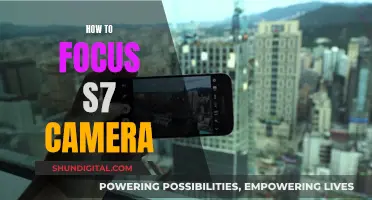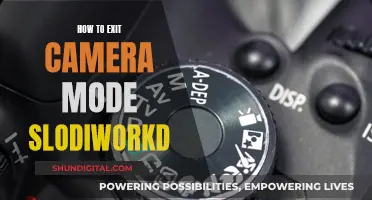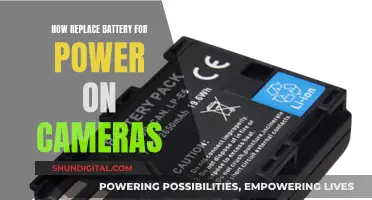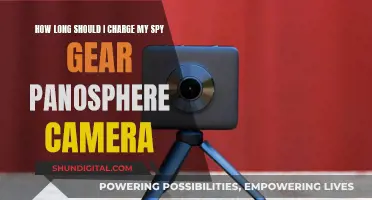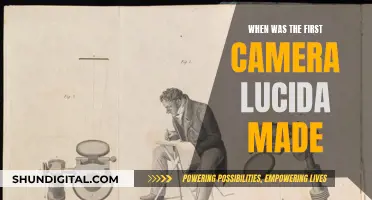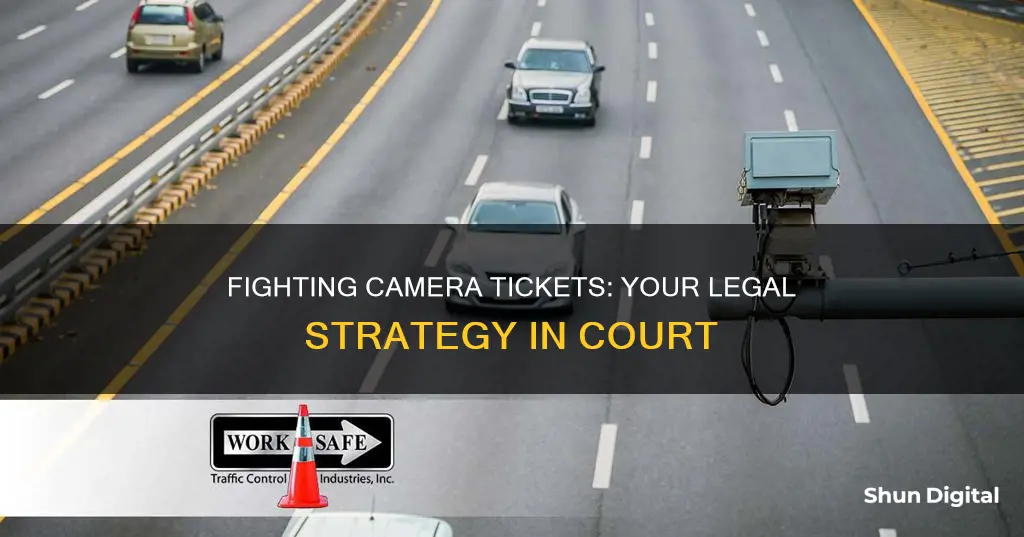
If you've received a camera ticket, you may be wondering if it's worth fighting it in court. The good news is that you have a few options for disputing the ticket and possibly getting it dismissed. Here's a step-by-step guide on how to fight a camera ticket in court.
First, it's important to examine your ticket carefully. Check the date, time, and location, and verify that you were actually driving the car when the ticket was issued. If someone else was driving, you may not be liable for the violation.
Next, review any photos or videos included with the ticket. If the images are blurry or unclear, it may be difficult for the prosecution to prove that it was your car or that you were the one driving. You can also argue that the camera may not have been properly calibrated or maintained, raising doubts about the accuracy of the evidence.
Another possible defense is to argue that there were extenuating circumstances, such as an emergency situation or the need to prevent a serious traffic accident. In some cases, you may be able to claim that the traffic light timing was too short, making it unsafe to stop.
To fight the ticket in court, you'll need to plead not guilty and request a formal hearing. You can do this by mail, online, or in person at an arraignment. It's important to meet any deadlines specified on your citation. During the hearing, you'll have the opportunity to present your evidence and argue your case.
Keep in mind that the specific procedures and defenses may vary depending on your location, so it's always a good idea to consult with a knowledgeable traffic ticket lawyer who can guide you through the process and improve your chances of success.
| Characteristics | Values |
|---|---|
| Check ticket details | Date, time, location, driver, car ownership, code section |
| Plead not guilty | By mail, online, or in court |
| Request documents | Photos, maintenance records, traffic light/speed monitoring system records |
| Research applicable law | Local traffic camera laws, warning sign requirements, necessity defence for speeding |
| Challenge evidence | Hearsay, lack of witnesses, authenticity of photos, lack of proof of traffic light functionality |
| Raise defences | Warning signs obscured or absent, necessity defence for speeding |
What You'll Learn
- Check the ticket details: Ensure the ticket is accurate and complete, and confirm the court date and address
- Plead not guilty: Respond by mail, online, or in person, and request a formal hearing
- Research the law: Understand the legal requirements, potential penalties, and possible defences
- Gather evidence: Collect photos, videos, witness statements, and technical data to support your case
- Challenge the evidence: Dispute the authenticity, reliability, or admissibility of the prosecution's evidence

Check the ticket details: Ensure the ticket is accurate and complete, and confirm the court date and address
When you receive a camera ticket, it's important to carefully examine the ticket and all associated paperwork. Here are some steps to follow to ensure the ticket is accurate and complete, and to confirm the court date and address:
- Verify your personal information: Check that your name and address are correct and spelled accurately. This is important to ensure that there is no case of mistaken identity or fraud.
- Contact the issuing agency: Reach out to the relevant agency, such as the highway patrol or local police department, to verify the authenticity of the ticket. Have your citation number ready when you make contact.
- Confirm court date and address: Check the ticket for the specified court date, time, and address. This information should be included on the ticket, along with the deadline for paying any fees or penalties. In some states, this date may be the latest you can appear in court, while in others, you may appear anytime before this date.
- Understand the arraignment process: An arraignment is not a court hearing but rather an opportunity for you to enter a plea of guilty, guilty with explanation, or not guilty. If you plead not guilty, a date for your court hearing will be set.
- Visit the traffic court clerk: The court clerk will provide you with the necessary paperwork and information regarding your defence. They will also give you a specific courtroom address and room number for your hearing.
By following these steps, you can ensure that you have accurate and complete information about your camera ticket and confirm the relevant court details.
Unlocking Pixel 3a's Camera Modes
You may want to see also

Plead not guilty: Respond by mail, online, or in person, and request a formal hearing
If you want to fight a camera ticket in court, you must plead not guilty. You can do this by mail, online, or in person. Here are the steps you need to take:
Pleading Not Guilty by Mail or Online
Some jurisdictions allow you to respond to the citation either by mail or online, especially for less serious traffic violations such as speeding or running a red light. Check your citation to see if this is an option for you. You must plead not guilty if you want to dispute the ticket and avoid paying the fine, as paying the fine is considered an admission of guilt in some jurisdictions. Make sure to plead not guilty before the deadline, which is typically within 30 days of receiving the citation.
Pleading Not Guilty in Person
If you have to appear in traffic court to plead not guilty, show up at the date and time listed on your citation. This may be called an arraignment, first appearance, or notice hearing, depending on your jurisdiction. When you plead not guilty, demand a full formal hearing or trial. You may also be required to attend other hearings, such as a pre-trial hearing or mediation, but don't accept anything less than a full dismissal of your ticket.
Remember, when you are pleading not guilty, the burden of proof is on the prosecution to prove that you are guilty. They must prove that you willingly broke the law, but you may be able to argue that this is not the case, for example, if you were rushing to the hospital in an emergency.
Achieving Flawless Skin Tone in Camera Raw
You may want to see also

Research the law: Understand the legal requirements, potential penalties, and possible defences
Research the Law
Understand the Legal Requirements
Firstly, you must understand the legal requirements and the specifics of the case against you. Check the ticket for the date, time, and location of the alleged violation. This is important because camera tickets are typically sent to the owner of the car, not the driver. Therefore, you must establish whether you were driving the car at the time of the violation.
Potential Penalties
Penalties for a red light camera ticket vary depending on the state. In some states, these tickets carry the same penalties as any other red light violation, including fines ranging from $75 to $400 and demerit points on the driver's record. However, in most states, red light camera violations are penalized less severely than traditional tickets issued by an officer, with lower fines and no demerit points.
Possible Defences
- The vehicle owner wasn't driving the vehicle: In most states, it is the driver, not the vehicle owner, who is liable for the violation. Many states allow owners who receive tickets to submit an affidavit stating they were not driving, which typically results in the dismissal of the ticket.
- The photos and videos don't show a violation: While photos and videos are generally considered strong evidence, they can sometimes be used to your advantage if they don't clearly show a violation. For example, if they don't show that your vehicle crossed the limit line or entered the intersection after the light turned red.
- Lack of proper signage: Some states require signs to be posted near intersections with red light cameras, informing drivers of their presence. If there were no such signs or they didn't meet the legal requirements, this could be a valid defence.
- Emergency or necessity: In some states, you may be able to argue that you disobeyed a traffic light due to an emergency, potential collision, or to prevent a serious traffic jam. This may result in the dismissal of your ticket.
- Challenge the admissibility of the photograph: In some jurisdictions, a red light camera photo may be considered hearsay and may be challenged on these grounds. You can argue that you have the right to confront your accuser, which is not possible in this case.
- Dispute the authenticity of the photograph: If no one from the company that maintains the camera testifies in court, you can object to the use of the photographs on the grounds of lack of foundation. The prosecution must prove that the camera, the system connecting it to the traffic light, and the traffic light itself were functioning properly.
Camera Bulb 360: Night Mode Malfunction Explained
You may want to see also

Gather evidence: Collect photos, videos, witness statements, and technical data to support your case
Evidence is crucial when fighting a camera ticket in court. Here are some steps to gather evidence and support your case:
- Photos and Videos: Request all photographic and video evidence from the relevant law enforcement agency. Review the photos and videos to confirm that the vehicle in question is indeed yours. If the license plate is not clearly visible or the photos/videos are blurry, it may be challenging to prove that the car belongs to you. Additionally, if there is no clear identification of the driver, this can be another defence strategy.
- Witness Statements: If someone else was driving your car when the photo/video was taken, their statement can be crucial. Get a written statement from them confirming they were driving, which can help get your case dismissed.
- Technical Data: Request maintenance records for the camera, traffic light, and speed monitoring system involved. Ensure they were regularly maintained and calibrated. If their accuracy was not recently tested, the evidence may be unreliable. Also, ask for calibration records for any devices used to determine your speed, such as radar devices.
- Scene Investigation: Visit the location where the camera ticket was issued. Take detailed notes and time the traffic light transitions. If the timing is minimal, you can argue that there wasn't enough time to safely stop. Look for other factors that may have contributed to the incident, such as road conditions or signage.
- Expert Testimony: Consult a knowledgeable camera ticket lawyer or an experienced red-light ticket lawyer. They will be familiar with the local traffic court and effective defence strategies. They can guide you on the specific evidence required and technical aspects of your case.
How to Rehearse Slideshows with Camera Access
You may want to see also

Challenge the evidence: Dispute the authenticity, reliability, or admissibility of the prosecution's evidence
Challenge the Evidence
Dispute the Authenticity, Reliability, or Admissibility of the Prosecution's Evidence
- Request a copy of the photo evidence, if not already provided, and review it. Check that it is clear and that your license plate is visible. If the photo is blurry, or your license plate is not clearly visible, this may be grounds for dismissal.
- Check the photo for the identity of the driver. If it is not you, this can be grounds for dismissal.
- Check the license plate in the photo against your own car. If the license plate does not match, this can be grounds for dismissal.
- Check the date, time, and location of the ticket. If you were not driving at the time, this can be a defence. However, in some states, the owner of the car is held liable, so check the red light law in the jurisdiction where you received the ticket.
- Request full maintenance records for the camera, as well as the traffic light or speed monitoring system. If the accuracy of the equipment was not tested within a reasonable timeframe before your ticket was issued, the photo may be deemed unreliable as evidence.
- Challenge the admissibility of the photograph as hearsay. In some jurisdictions, a red light camera photo is considered hearsay and is inadmissible unless it fits into a hearsay exception.
- Assert your right to confront witnesses. Unless a witness appears who maintains the record and system associated with the camera, you do not have the opportunity to cross-examine them.
- Dispute the authenticity of the photograph. If no one from the company that maintains the camera shows up to testify, object to the use of the photographs for lack of foundation.
- For a speeding ticket, the company or officer who maintained the camera and the speed detection equipment must appear in court to testify, or the photo has no foundation to be admitted into evidence.
- For the prosecution to rely on the photos, they must present evidence that the camera, the system that connects it to the traffic light, and the traffic light itself were functioning properly. Without this foundation, the photo is not reliable and cannot be admitted into evidence.
- If the photos are clear and the judge allows them, but none show you driving, argue that the prosecution cannot prove it was you driving the car.
Evolution of Casio Cameras: First Screens Unveiled
You may want to see also
Frequently asked questions
Examine your ticket, check the date, time, and location, and verify if you were driving the car when the ticket was issued. Make a note of the code section you're cited for violating and review any photos included with your citation.
Plead not guilty by the deadline, which is typically within 30 days. You may be able to do this by mail or online, depending on your jurisdiction.
You will receive a date for your court hearing, where you will need to appear and request a formal hearing or trial. You may also be required to attend other hearings such as pre-trial hearings or mediation.
Research the applicable laws and cases in your city or county regarding traffic cameras. Request production of documents such as maintenance records for the camera and review any photos or videos of the alleged violation.
You can argue that the prosecution cannot prove you were driving, especially if there is no clear photo of you in the driver's seat. You can also dispute the authenticity and admissibility of the photographs as evidence, or raise other defenses such as unclear signage or necessity due to an emergency.


